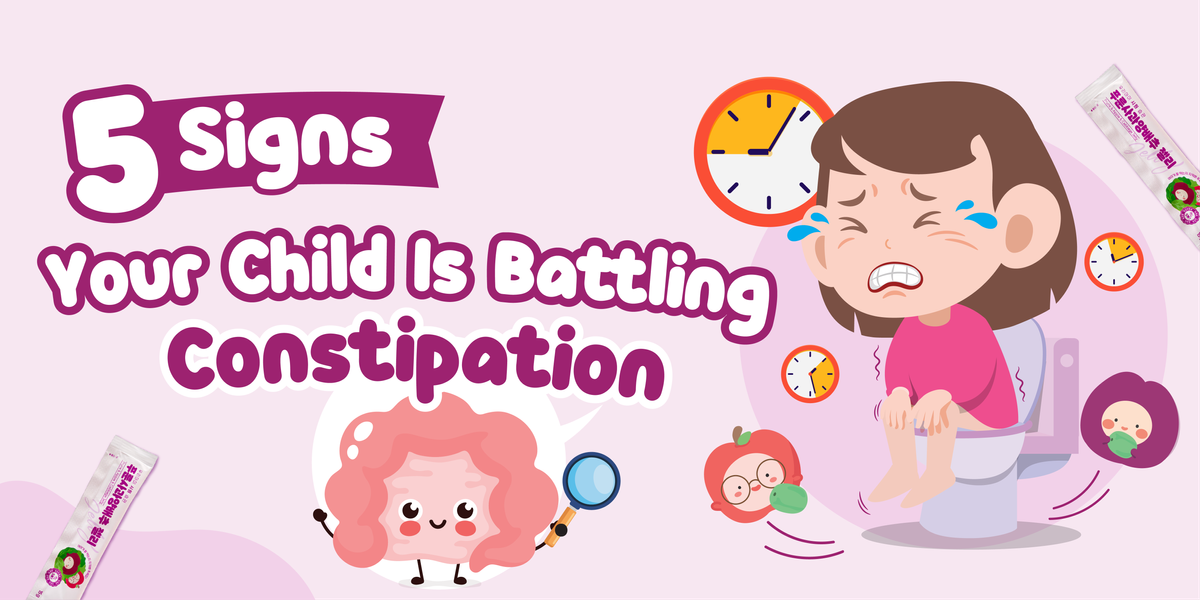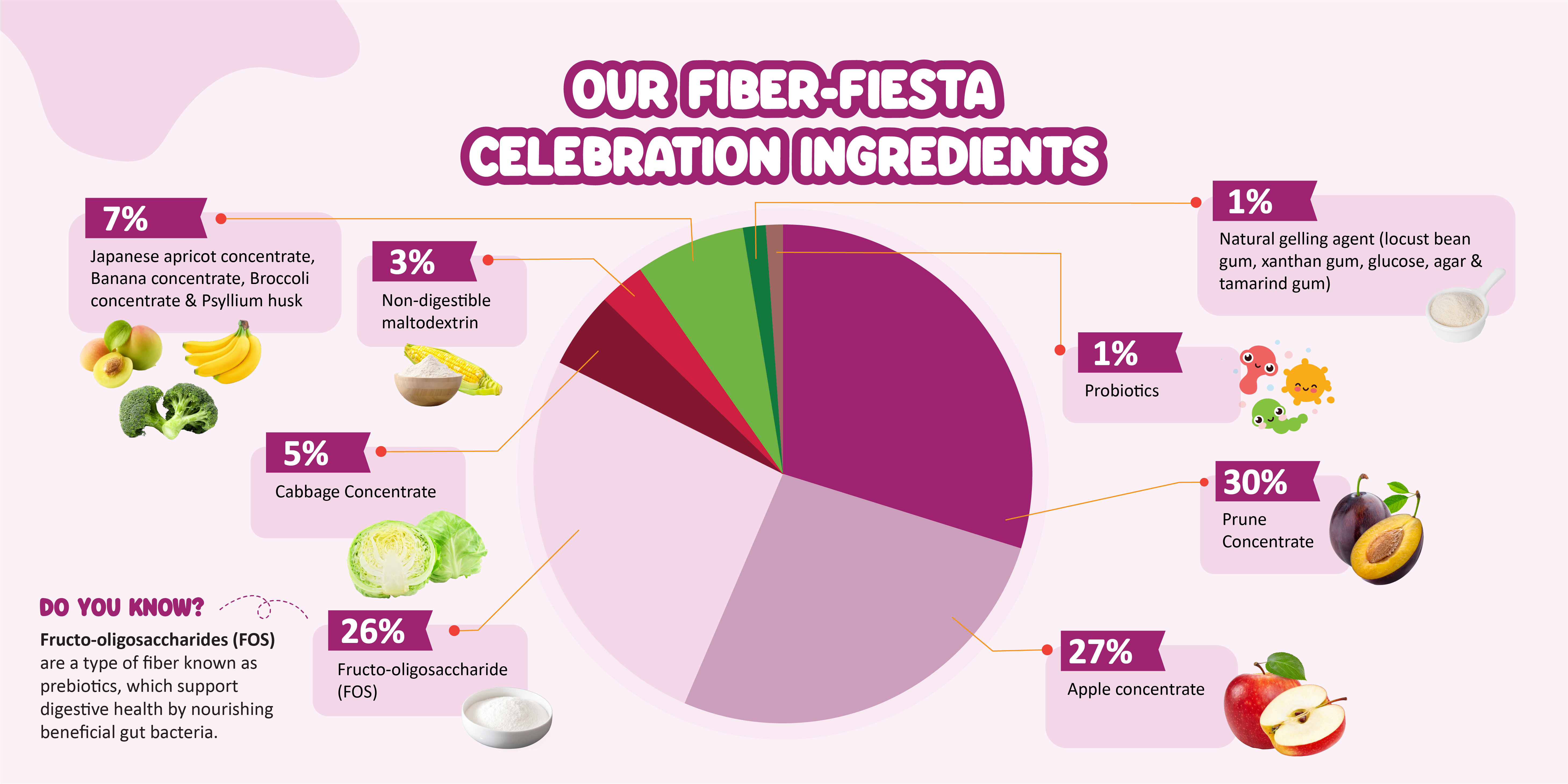
As parents, we all want our children to be healthy and happy. But sometimes, even with our best efforts, our little ones can face some common health issues. One such issue is constipation. If you’ve ever had a constipated child, you know it can be a frustrating and worrisome experience for both you and your child. But don’t worry – there are ways to help!
Understanding Constipation in Children
According to the National Institute of Health, constipation means that a person has three or fewer bowel movements in a week.1 Constipation in kids also means having few bowel movements, hard or dry stools, and sometimes even pain when they try to go.
Is My Child Constipated?2
It can be difficult for parents to understand their child's bowel movements. Young children are unable to tell you if they’re having problems ‘pooping’. So how can you tell if your child is constipated? Here are a signs to watch for:
Going less than 3 times a week
Hard, dry or large dry stools
Pain or straining when they go
Abnormal eating habits, or won’t eat
Swollen belly
Why is My Child Constipated?2
The cause of constipation in children may not always be clear. It can occur for a variety of reasons. Here are some of the most common:
Diet: Not enough fiber-rich foods or fluids can lead to constipation. Kids can be super picky eaters, and their love for junk food doesn’t help!
Activity Level: Physical activity keeps the digestive system moving. Less active kids might get constipated more often.
Routine Changes: Traveling, starting school, or any changes in daily routine can mess with your child’s bathroom habits.
“Holding It In”: Sometimes, kids avoid going to the bathroom, especially if they’re in unfamiliar or uncomfortable places, which can lead to constipation.
5 Ways to Ease Your Child’s Constipation3
Being a parent, there are several things you can try in the comfort of your own home to help prevent your child from constipation. Here’s what you can do:
Eat More Fiber: Add fruits, veggies, whole grains, and beans to their meals. Foods like prunes, apples, bananas, broccoli and cabbage are great choices.
Opt for Pre & Probiotics-Rich Food: Natural sources like bananas, apples, yogurt, tempeh or kimchi can be a gentle and natural way to promote a healthy gut.
Get Moving: Encourage your kid to play outside, join sports, or just move around more. Physical activity helps get things moving in their tummy.
Stay Hydrated: Make sure your child drinks plenty of water throughout the day. Staying hydrated is key to preventing constipation.
Set a Routine: Create a consistent bathroom routine, especially after meals, to help your child develop regular bowel habits.
Fiber Fiesta with DDODDOMAM Prune & Apple & Cabbage Jelly

If you’re looking for a tasty and fun way to maintain regular bowel movements for your child, check out DDODDOMAM Prune & Apple & Cabbage Jelly. It contains festive-mixed natural ingredients that can help support your child’s digestive system running smoothly and prevent constipation.

This yummy jelly snack is more than just a treat; it’s bursting with the goodness of fiber-rich ingredients including prune, apple, cabbage and many more. Plus, the double action of prebiotics from fructo-oligosaccharides (FOS) and non-digestible maltodextrin and probiotics will surely promise easy-breezy bowel days ahead!

If you're still curious to know more about this DDODDOMAM Prune & Apple & Cabbage Jelly and how it can support your child's bowel health, check out this link here. It's a tasty and fun way to give your child's bowel the support it needs to thrive. Give it a try – your child's tummy will thank you!
References
National Institute of Diabetes and Digestive and Kidney Diseases (NIDDK). (2018). Constipation. Retrieved May 27, 2024, from: https://www.niddk.nih.gov/health-information/digestive-diseases/constipation/definition-facts
National Institute for Health and Care Excellence (2010) Constipation in Children and Young People: Diagnosis and Management. NICE.
KidsHealth. (2023). Constipation. Retrieved May 27, 2024, from: https://kidshealth.org/en/parents/constipation.html




